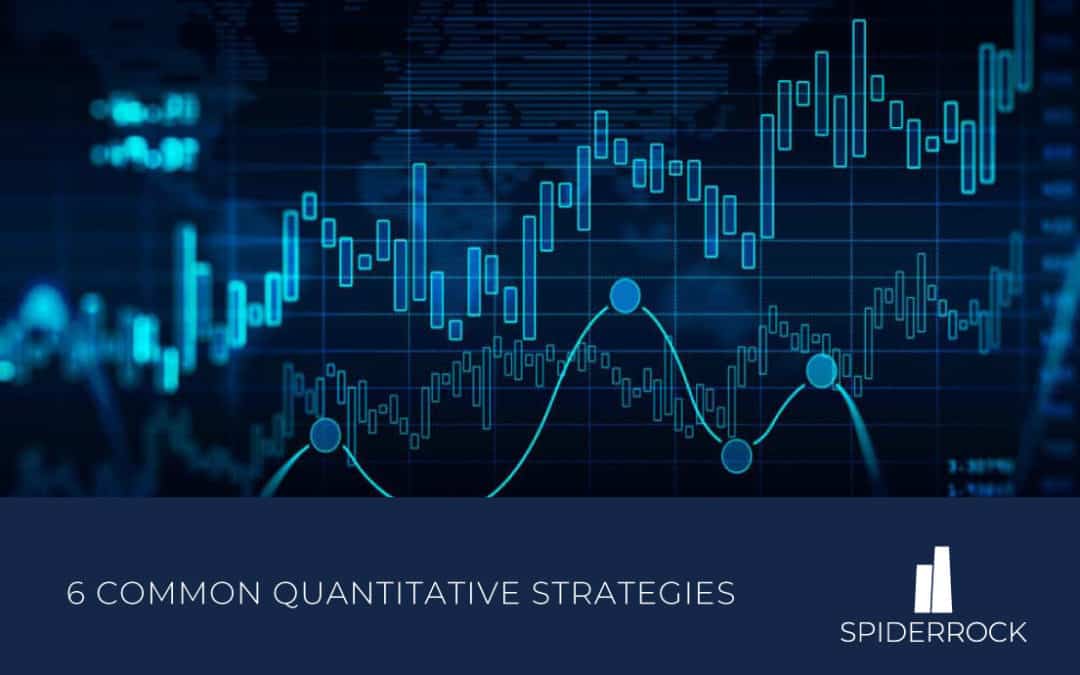It is estimated that roughly 90% of trading on U.S. public markets uses algorithmic quantitative trading strategies, a number likely to grow as investors leverage technology and modeling techniques to exploit the smallest market inefficiencies. But what is a quantitative trading strategy?
We covered quantitative investing basics in What is Quantitative Investing? In this follow-up article, we’d like to explore some of the strategies quants deploy. The specifics are proprietary secrets, but most strategies fit into broad categories, with individual implementations varying in the factors they focus on and their relationships.
Quantitative Value Strategy
Quantitative value strategies focus on the value of stocks, seeking undervalued businesses that are expected to increase in value over time. In general, value strategies work by selecting a “universe of stocks” and eliminating those considered high risk. The stocks are sorted for cheapness using valuation multiples, and the likelihood of their value increasing is determined through analysis of profitability and financial strength, among other factors. The success of a value strategy depends on correctly identifying underpriced stocks that will increase in value over time.
Smart Beta Strategies
Beta is a measure of a security’s sensitivity to the movement of the market. It measures how an asset performs relative to the market as a whole, as indicated by an index weighted by market capitalization, such as the S&P 500. For example, a stock that is 30% more volatile than the market has a beta of 1.3. By focusing on beta, investors can construct passively managed portfolios that satisfy their risk preferences.
Smart beta strategies aim to outperform markets with custom indices reweighted according to factors such as volatility, momentum, size, or value. Like beta funds, smart-beta funds are closely correlated to the market as a whole, but they include an element of active selection according to the strategy’s rules.
Factor-Investing Strategies
A factor is a quantifiable attribute of an asset associated with higher returns. Factors are typically divided into macroeconomic and microeconomic factors. Macroeconomic factors include inflation, liquidity, and economic growth. Microeconomic factors include stock price volatility, credit levels, share liquidity, and quality. Factor investing aims to create a market-beating diversified portfolio by investing in securities with factors that imply excellent returns.
Factor investing is an extensive set of strategies that include some of the other strategies we’re discussing here, such as smart beta strategies.
Statistical Arbitrage
Statistical arbitrage is a quantitative investment approach that aims to create highly diverse portfolios with securities that may be held for as little as fractions of a second. The fundamental strategy is based on mean reversion analysis. Analysts identify pricing inefficiencies in pairs or correlated groups of securities. They open long positions in undervalued securities and match short positions in overvalued securities in the expectation that prices will revert to the mean. The methodology used to correlate securities can be complex, and statistical arbitrage makes heavy use of high-frequency trading techniques, quantitative analysis, and computer modeling.
Event-Driven Arbitrage
Event-driven arbitrage seeks to leverage historical and real-time data to identify improperly priced securities that are likely to respond to events in a specific business or the market. At its simplest, event-driven arbitrage might lead an investor to buy a stock with the expectation that its value will rise before or after an earnings call. But the events can be much more complex, including regulatory changes, management restructuring, shareholder activity, and so on.
AI/Machine Learning Strategies
Quantitative investing strategies typically rely on mathematical models and algorithms developed by analysts and programmers. They encode the rules and let the algorithm loose on real-world data.
Artificial intelligence strategies take the use of computer models one step further, deploying machine learning technologies to analyze vast quantities of data and identify patterns that can then be encoded in trading algorithms. Machine learning allows analysts to automate and accelerate analysis while developing models based on far subtler and more complex patterns than would otherwise be possible. We discussed machine learning in greater depth in How is Machine Learning Used in Trading?
SpiderRock offers a wide range of data and computation services to facilitate quantitative trading. These include raw and normalized, real-time, low-latency, multicast stock, option, and future feeds, comprehensive historical datasets for backtesting, risk management solutions, and FIX Gateways for low-latency, high-throughput order entry, management, and execution.
